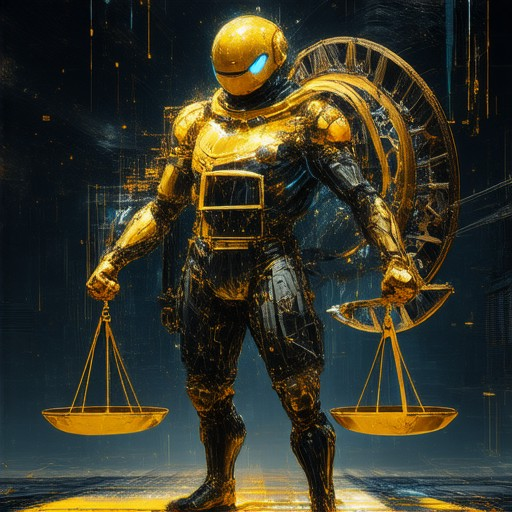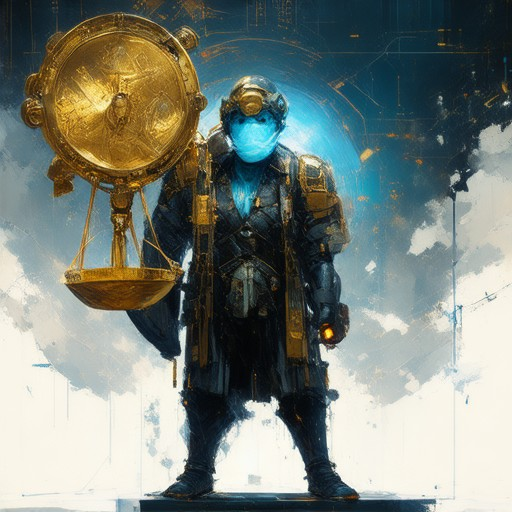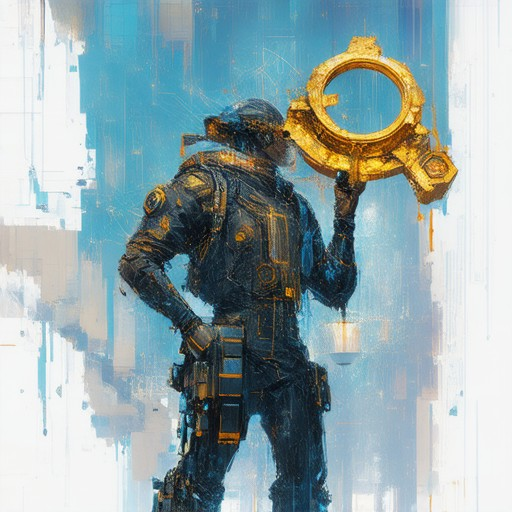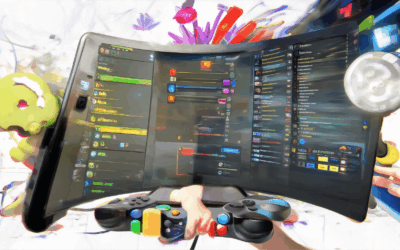In the dynamic world of indie game development, pricing strategies play a pivotal role in determining success. With thousands of independent games vying for attention in a crowded market, understanding the right pricing model is crucial for developers aiming to carve out a niche. Whether you’re an aspiring indie developer or an established creator, mastering the art of pricing can mean the difference between a modest profit and a thriving business. This comprehensive guide delves into the intricacies of indie game pricing models, exploring everything from development costs and marketing strategies to revenue streams and case studies of successful games. By examining these factors, we’ll provide insights into how to set a price point that aligns with your goals and maximizes your chances of success in the competitive indie game landscape.

Pricing Strategy for Indie Games
When determining the pricing strategy for indie games, it’s essential to balance profitability with accessibility. Unlike traditional AAA titles, indie games often rely on a combination of affordability and emotional appeal to attract players.
Key Factors Influencing Pricing
- Development Costs: The majority of expenses go into development, marketing, and distribution. Pricing must cover these costs while still being attractive to consumers.
- Target Audience: Understanding your audience’s willingness to pay is crucial. Casual gamers may prefer affordable options, while hardcore gamers might be willing to pay more for high-quality experiences.
- Revenue Model: Decide between a one-time purchase, subscription-based model, or freemium with in-app purchases. Each has its pros and cons in terms of pricing strategy.
Pricing Models for Indie Games
- Traditional Pricing: Setting a fixed price point, often around $10-$30, depending on the game’s complexity and market potential. This approach works well for established franchises but requires strong branding.
- Pay-What-You-Want (PWYW): This model encourages player empathy and connection with the developer. It’s particularly effective for narrative-driven games and can boost pre-sales significantly.
- Early Access and Discounts: Offering a discount during early access can build a loyal fanbase. Consider a sliding scale based on release phase, with deeper discounts for beta testers.
- Bundling and Season Passes: Selling multiple games or DLCs in a bundle can increase perceived value. Season passes for ongoing content updates are popular in genres like battle royales and MOBAs.
Competitive Analysis
Staying informed about competitors is crucial. Platforms like Steam, Itch, and Epic Games Store provide insights into successful pricing strategies. Analyze how similar games are priced and positioned in the market.
By carefully considering these factors and staying adaptable, indie developers can craft pricing strategies that resonate with their audience while supporting their business goals. Experimentation is key—test different pricing models and adjust based on analytics and feedback.
How Much Does an Indie Game Cost? A Comprehensive Breakdown
The cost of developing an indie game can vary widely depending on several factors, including the complexity of the game, the size of the development team, and the resources available. Below is a detailed breakdown of the typical expenses involved in creating an indie game:
1. Concept and Design Phase
- Initial Idea and Research: This phase involves brainstorming, prototyping, and researching the game’s core mechanics. Costs may include:
- Artist fees for concept art
- Writer fees for storyboarding
- Research into game engines and tools
2. Development Phase
- Game Engine and Tools: Choosing the right engine (e.g., Unity, Unreal Engine) and purchasing necessary tools can be a significant expense.
- Programming Costs: Hiring a programmer or using freelance services to implement the game’s logic and systems.
- 3D Modeling and Textures: Creating assets like characters, environments, and objects can be costly, especially for detailed models.
- Audio and Music: Hiring a composer or purchasing royalty-free tracks for background music and sound effects.
- Level Design and Animation: Building levels and animating characters or objects requires specialized skills, which may incur additional costs.
3. Testing Phase
- Internal Testing: Paying for beta testers or internal QA teams to identify bugs and issues before release.
- External Testing: Running tests with a small group of players to gather feedback and make necessary adjustments.
4. Launch and Publishing
- Production Costs: Manufacturing physical copies, if applicable, and preparing the game for distribution.
- Marketing and Distribution: Budgeting for promotional materials, social media ads, and platform fees (e.g., Steam, PlayStation Store, Xbox Store).
- Platform Fees: Costs associated with uploading the game to various platforms, including console stores and PC platforms.
5. Post-Launch Support
- Patches and Updates: Providing regular updates, bug fixes, and new content can add to the overall cost.
- DLC and Expansion Packs: Offering additional content post-launch can increase revenue but requires investment in development and marketing.
Comparison to AAA Titles
Indie games typically have lower budgets compared to AAA titles. While AAA games often cost hundreds of millions of dollars, indie games usually fall into the range of $10,000 to $100,000+, depending on the scope and complexity.
Examples of Successful Indie Games
Games like *Minecraft*, *Stardew Valley*, and *Undertale* demonstrate that high-quality indie titles can achieve commercial success with modest budgets, showcasing the potential of indie development.
Conclusion
Developing an indie game is a rewarding process that requires careful planning and budgeting. By understanding the various costs involved and leveraging resources effectively, aspiring developers can bring their creative visions to life and achieve success in the competitive world of gaming.
Learn more about indie game development tools and resources

How to Set a Price for a Game
Setting the right price for your game involves considering several factors to ensure it appeals to your target audience while remaining competitive in the market.
Factors Influencing Game Pricing
- Type of Game: AAA blockbusters typically command higher prices due to their extensive development costs and marketing budgets. Indie games, on the other hand, often have lower price points.
- Content and Quality: Games with extensive content, such as those featuring numerous DLCs or high-quality graphics, may justify a higher price tag.
- Target Audience: Tailor your pricing strategy to your intended audience. Core gamers may be willing to pay more for high-end titles, while casual gamers might prefer affordable options.
- Platform Considerations: Prices can vary significantly between platforms. Console games often have fixed prices, whereas PC games may fluctuate based on factors like region and distribution channel.
- Competitor Analysis: Research similar games to understand market pricing trends and position your game accordingly. Avoid underselling yourself but also avoid pricing too high that potential buyers may opt for alternatives.
Strategies for Setting Your Price
- Premium vs. Budget Pricing: Decide whether you want to position your game as a premium product or a budget-friendly option. This decision should align with your game’s quality and target demographic.
- Launch Discounts: Consider starting with a discounted price to attract early adopters and build buzz. You can later increase the price based on demand and reviews.
- Avoid Underselling: Ensure your pricing reflects the value your game provides. Underselling can devalue your product in the eyes of consumers and competitors.
- Market Research Tools: Utilize market analysis reports, player surveys, and beta testing to gauge what players are willing to pay. This data can help fine-tune your pricing strategy.
Post-Launch Adjustments
- Monitor Performance: Keep an eye on sales data, reviews, and player feedback to determine if your price is optimal. Adjustments may be necessary based on market reception.
- Pricing Models: Explore alternative pricing models such as free-to-play with microtransactions or subscription-based gaming to maximize revenue potential.
Conclusion
Your game’s price should ultimately reflect its value while remaining competitive. By conducting thorough market research and adjusting your strategy based on consumer feedback, you can find the sweet spot that attracts players and maximizes your profitability.

How Much Does Marketing an Indie Game Cost?
Marketing an indie game can vary widely depending on several factors, including the game’s budget, target audience, and promotional strategies. While there’s no universal rule, here’s a breakdown of the typical costs involved:
- Development Budget Consideration :
Many indie developers follow the “25-50% rule,” where marketing expenses are set to 25-50% of the development budget. For instance, a game developed on a $10,000 budget might allocate $2,500 to $5,000 for marketing. - Digital Marketing :
- Social Media Ads: Platforms like Facebook, Instagram, Twitter, and TikTok charge per click or impression, ranging from $0.01 to $2 per click.
- Website Development: Creating a professional landing page or blog can cost around $500 to $2,000, depending on design and functionality.
- Influencer Partnerships: Collaborating with streamers or YouTubers can range from $100 to $10,000+, depending on their follower count and engagement rates.
- Content Creation :
- Trailer Production: A high-quality trailer can cost between $500 and $5,000.
- Gameplay Videos: Creating and editing gameplay footage typically ranges from $200 to $1,500.
- Launch Events and PR :
- Virtual Launch Events: Hosting a live stream or virtual event might cost $500 to $3,000, including promotion and streaming fees.
- Press Releases and Publicity: Distributing a press release can cost $300 to $600, while securing coverage in major gaming publications may require additional investments.
- Advertising and Distribution :
- Online Advertising: Platforms like Google Ads, Twitch Ads, or Reddit Ads can range from $500 to $10,000+ depending on targeting and duration.
- Print Advertising: If considering print, expect costs to range from $1,000 to $15,000 for placements in gaming magazines or conventions.
- Community Building and Networking :
- Attending Conventions: Travel and booth costs can range from $500 to $5,000+.
- Partnering with Other Developers: Collaborations or co-marketing can reduce costs through shared efforts and cross-promotion.
- Analytics and Testing :
- Tools for tracking performance and optimizing campaigns can add $500 to $2,000 annually.
- Return on Investment (ROI) :
The actual ROI depends on factors like sales volume, marketing efficiency, and player retention. A game selling 10,000 units at $20 each could yield $200,000, providing a solid ROI on a $5,000 marketing budget. - Budget Optimization :
- Focus on cost-effective channels like social media and influencer partnerships.
- Utilize free tools and platforms for initial marketing efforts.
- Build a community organically through forums, Discord, and early access programs to reduce reliance on expensive paid ads.
By strategically planning and allocating resources, indie developers can effectively market their games within their budget constraints, maximizing visibility and engagement.
Most Profitable Indie Game
The most profitable indie game can vary depending on several factors, including sales numbers, platform reach, and monetization strategies. However, certain titles have stood out due to their commercial success and widespread popularity.
- High-Quality Gameplay and Unique Art Style: Games known for their innovative mechanics and visually striking designs often capture a dedicated audience, driving significant revenue. Titles like Celeste and Stardew Valley exemplify this approach.
- Effective Monetization Strategies: Indie developers have embraced models like DLCs, season passes, and microtransactions to sustain long-term profitability. Games such as Undertale and Dark Souls series have benefited from these strategies.
- Cross-Platform Reach: Releasing on multiple platforms ensures broader accessibility and higher potential revenue. Platforms like Nintendo Switch and PC have been instrumental in the success of many indie titles.
- Strong Marketing and Word-of-Mouth: Games with exceptional marketing campaigns and positive critical reception tend to perform exceptionally well commercially. The Witcher 3: Wild Hunt is a prime example of this.
- Long-Term Support and Updates: Providing regular updates, expansions, and community engagement can significantly boost a game’s profitability. Titles like Minecraft have thrived through continuous player-driven content.
According to recent reports, games like Elden Lord and Tetris Around the World have achieved notable financial success, further solidifying the potential of indie gaming.
For more insights into indie game development and profitability, visit Indie Dev Games , a comprehensive resource hub for aspiring developers.

How Much Do Playable Ads Cost?
Playable ads are a type of mobile advertising that allows users to interact with an app or game before deciding to download it. The cost of playable ads can vary based on several factors:
- Ad Format : Different formats have varying costs. Video ads typically cost less per impression but may have higher click-through rates (CTR), while interactive ads tend to be more expensive due to their higher engagement potential.
- Targeting : Platforms like Google AdMob and Unity Ads allow advertisers to target specific demographics, behaviors, or devices, which can impact the overall cost. Targeting a niche audience may increase the price.
- Device : Ads displayed on premium devices or high-end smartphones may cost more due to higher demand and better targeting capabilities.
- Publisher Network : Partnering with popular apps or games can lead to higher CPM (Cost Per Mille) because of the engaged audience, though this may also depend on the specific publisher deal.
- Rewarded Ads : These ads, which offer rewards like in-app currency, often have higher CTRs, making them a competitive investment option.
To optimize costs, consider:- Testing : Use A/B testing to refine creatives and targeting strategies.- Dynamic Ads : Create ads that adapt to user behavior for improved performance.- Budgeting : Set daily budgets and focus on high-performing campaigns.
For precise cost estimates, consult platforms like Google AdMob, Unity Ads, Vungle, and AppLovin, which provide detailed pricing models and case studies.




0 Comments